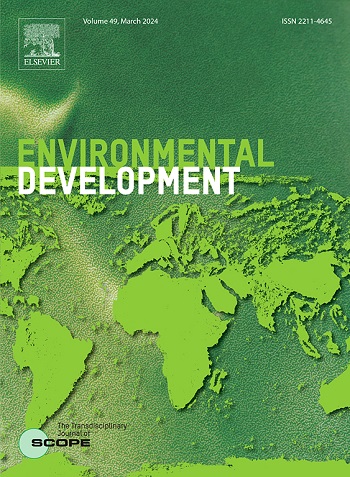Techno-economic analysis on community-based municipal solid waste processing facilities: A case study in Sleman Regency Indonesia
IF 4.7
2区 环境科学与生态学
Q2 ENVIRONMENTAL SCIENCES
引用次数: 0
Abstract
The Indonesian government established a nationwide community-based Municipal Solid Waste (MSW) treatment program as an intermediate treatment facility designed to serve 400 households. The facility is called TPS3R (Tempat Pengolahan Sampah dengan Reuse-Reduce-Recycle, translated into MSW Treatment Facility based on Reduce-Reuse-Recycle). Of the 922 TPS3R units nationwide, only 538 (58.35%) were functional. Owing to this low success rate, the government should evaluate the TPS3Rs situation before planning to build 307 new TPS3Rs from 2023 to 2024. This study compares the economic feasibility of intermediate treatment facilities at two scales: TPS3R Bramamuda (2 tons of MSW/day) and TPST Sinduadi (18 tons of MSW/day). The treatment cost for TPS3R Bramamuda was Rp. 742,000 (USD 50)/ton MSW, whereas that for TPST Sinduadi was Rp. 298,000 (USD 20)/ton MSW. However, the current tipping fees of both units were lower than the treatment costs. TPST Sinduadi downstream processing was crucial for offsetting treatment costs and tipping the fee gap. TPS3R Bramamuda did not have an extensive downstream business and relied on government grants to survive. Based on this study, several policy recommendations were proposed: 1) reasonability of the economic analysis and business plan should be included as one of the criteria to disburse state grants; 2) the government should guarantee the off-takers of the MSW treatment products; 3) the government should employ new methods to force the community to sort their garbage by enforcing a fair reward and penalty system; and 4) exploration of technology applications to charge the community with variable retributions, depending on their waste segregation compliance.
基于社区的城市固体废物处理设施的技术经济分析:印度尼西亚 Sleman 地区的案例研究
印度尼西亚政府在全国范围内建立了一个以社区为基础的城市固体废物(MSW)处理项目,作为一个中间处理设施,为 400 户家庭提供服务。该设施被称为 TPS3R(Tempat Pengolahan Sampah dengan Reuse-Reduce-Recycle,译为基于减量-再利用-再循环的城市固体废物处理设施)。在全国 922 个 TPS3R 单位中,只有 538 个(58.35%)正常运行。由于成功率较低,政府应在计划于 2023 年至 2024 年新建 307 套 TPS3R 之前,对 TPS3R 的情况进行评估。本研究比较了两种规模的中间处理设施的经济可行性:TPS3R Bramamuda(每天处理 2 吨 MSW)和 TPST Sinduadi(每天处理 18 吨 MSW)。TPS3R Bramamuda 的处理成本为 742,000 印尼盾(50 美元)。742,000 印尼盾(50 美元)/吨都市固态垃圾,而 TPST Sinduadi 的处理成本为 298,000 印尼盾(20 美元)/吨都市固态垃圾。不过,这两个单位目前的倾倒费都低于处理成本。TPST Sinduadi 的下游处理对抵消处理成本和弥补费用缺口至关重要。TPS3R Bramamuda 没有广泛的下游业务,依靠政府拨款生存。根据这项研究,提出了若干政策建议:1) 应将经济分析和商业计划的合理性作为发放国家补助金的标准之一;2) 政府应保证 MSW 处理产品的承购者;3) 政府应采用新方法,通过执行公平的奖惩制度来强制社区进行垃圾分类;4) 探索技术应用,根据社区的垃圾分类达标情况收取不同的回报。
本文章由计算机程序翻译,如有差异,请以英文原文为准。
求助全文
约1分钟内获得全文
求助全文
来源期刊

Environmental Development
Social Sciences-Geography, Planning and Development
CiteScore
8.40
自引率
1.90%
发文量
62
审稿时长
74 days
期刊介绍:
Environmental Development provides a future oriented, pro-active, authoritative source of information and learning for researchers, postgraduate students, policymakers, and managers, and bridges the gap between fundamental research and the application in management and policy practices. It stimulates the exchange and coupling of traditional scientific knowledge on the environment, with the experiential knowledge among decision makers and other stakeholders and also connects natural sciences and social and behavioral sciences. Environmental Development includes and promotes scientific work from the non-western world, and also strengthens the collaboration between the developed and developing world. Further it links environmental research to broader issues of economic and social-cultural developments, and is intended to shorten the delays between research and publication, while ensuring thorough peer review. Environmental Development also creates a forum for transnational communication, discussion and global action.
Environmental Development is open to a broad range of disciplines and authors. The journal welcomes, in particular, contributions from a younger generation of researchers, and papers expanding the frontiers of environmental sciences, pointing at new directions and innovative answers.
All submissions to Environmental Development are reviewed using the general criteria of quality, originality, precision, importance of topic and insights, clarity of exposition, which are in keeping with the journal''s aims and scope.
 求助内容:
求助内容: 应助结果提醒方式:
应助结果提醒方式:


